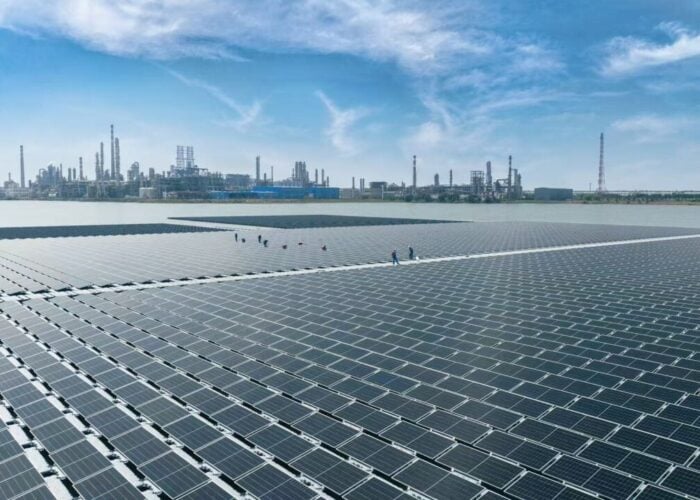
Australia’s distributed energy sector continues to increase adoption rates for solar PV, raising the need for households and businesses to have sufficient energy storage capabilities to capture green energy, providing optimisation to the system.
To learn more about an energy storage systems’ role in Australian homes, Elliot Shen, sales director of Anker SOLIX ANZ, spoke to PV Tech at the recent All-Energy Australia 2024 event in Melbourne.
Unlock unlimited access for 12 whole months of distinctive global analysis
Photovoltaics International is now included.
- Regular insight and analysis of the industry’s biggest developments
- In-depth interviews with the industry’s leading figures
- Unlimited digital access to the PV Tech Power journal catalogue
- Unlimited digital access to the Photovoltaics International journal catalogue
- Access to more than 1,000 technical papers
- Discounts on Solar Media’s portfolio of events, in-person and virtual
PV Tech: You have been in the Australian energy storage market for a long time and joined Anker this year to manage energy storage-related businesses. What are your thoughts on leading the expansion of Anker SOLIX in the Australian market?
I’ve spent the past seven years in the Australian energy storage market, previously managing the local operations for companies like Huawei and CATL. During this time, I gained valuable experience in navigating competitive markets and developing resilient strategies for growth.
At Anker SOLIX, I’m excited to leverage these experiences to introduce innovative energy solutions tailored to the growing demand for greater energy independence and resilience in Australian households.
Could you provide a bit of context about Anker and its global operations? What key markets do you operate in, and what are some of the opportunities in each?
Anker is the world’s number one mobile charging brand and a global leader in consumer technology. Our presence spans over 100 countries, with offices in 17 of them. Nearly 50% of our 4,000 employees are dedicated to research and development, driving continuous innovation across our product categories.
This commitment to R&D has allowed us not only to lead Anker to becoming the world’s top mobile charging brand, but also to become the top smart home brand in Australia through our eufy brand and its line of popular home security and smart home appliances.
With this strong foundation, we are now expanding our Anker SOLIX business in Australia, where there is increasing consumer demand for reliable energy storage solutions that promote sustainability and energy independence.
Australia has seen a rise in both solar PV and energy storage deployment and has some of the highest penetration in the world. Why do you think this is, and how do these technologies complement one another?
Australia’s geographical advantages, such as abundant sunlight, make solar power a natural choice for homeowners. Over 3.85 million homes have installed solar panels, but the penetration rate for energy storage systems remains relatively low, highlighting significant growth potential. By combining solar panels with storage solutions, homeowners can maximise their energy independence and lower their electricity bills.
Government policies play a key role in this development, offering incentives and rebates for clean energy installations. Moreover, the ability to sell excess energy back to the grid adds another layer of financial benefit. As demand for renewable energy grows, integrated solar and storage systems are becoming an essential part of a sustainable and resilient energy strategy.
Are there any new products that you would like to share with our audience? Could you tease any up-and-coming technologies?
Our flagship product, the X1 AC-coupled home storage system, is now available. It is designed to address the growing demand for integrated solar and storage solutions in Australia, featuring a sleek, ultra-thin design, high C5 corrosion resistance, and modular scalability up to 30kWh.
This ensures reliable performance in diverse climatic conditions while providing flexible options for households. Beyond the X1, we are expanding our portfolio of home energy solutions to meet different needs.
For example, our Solarbank is already popular in Germany, offering compact energy storage options for apartment dwellers, while, our new F3800 is the first hybrid portable power station and home backup solution. These products reflect our commitment to innovation and providing versatile solutions for all types of consumers.
What can our viewers keep an eye out for from Anker? With 2024 soon coming to an end, what do you hope to achieve in the coming year?
At Anker SOLIX, our focus is on building direct relationships with consumers rather than just traditional B2B models. We actively gather and listen to customer feedback through various channels to continuously improve our products.
For example, during the US launch of the X1, we gathered over 4,700 high-quality leads on the first day alone, which we provided to our trusted installers to support their success. Looking ahead to 2025, we aim to deepen our industry collaborations, promote the development of photovoltaic storage, and refine our virtual power plant (VPP) ecosystem to create more value for our partners.
Our goal is to bring more innovative and reliable solutions to consumers, ensuring long-term growth in the energy sector.







